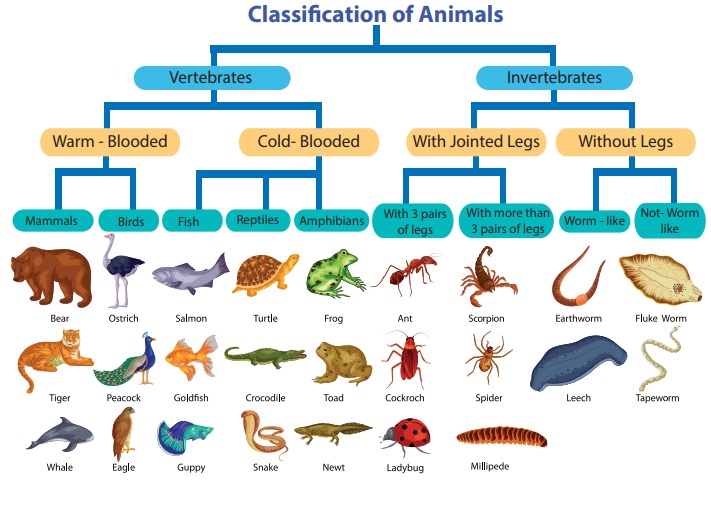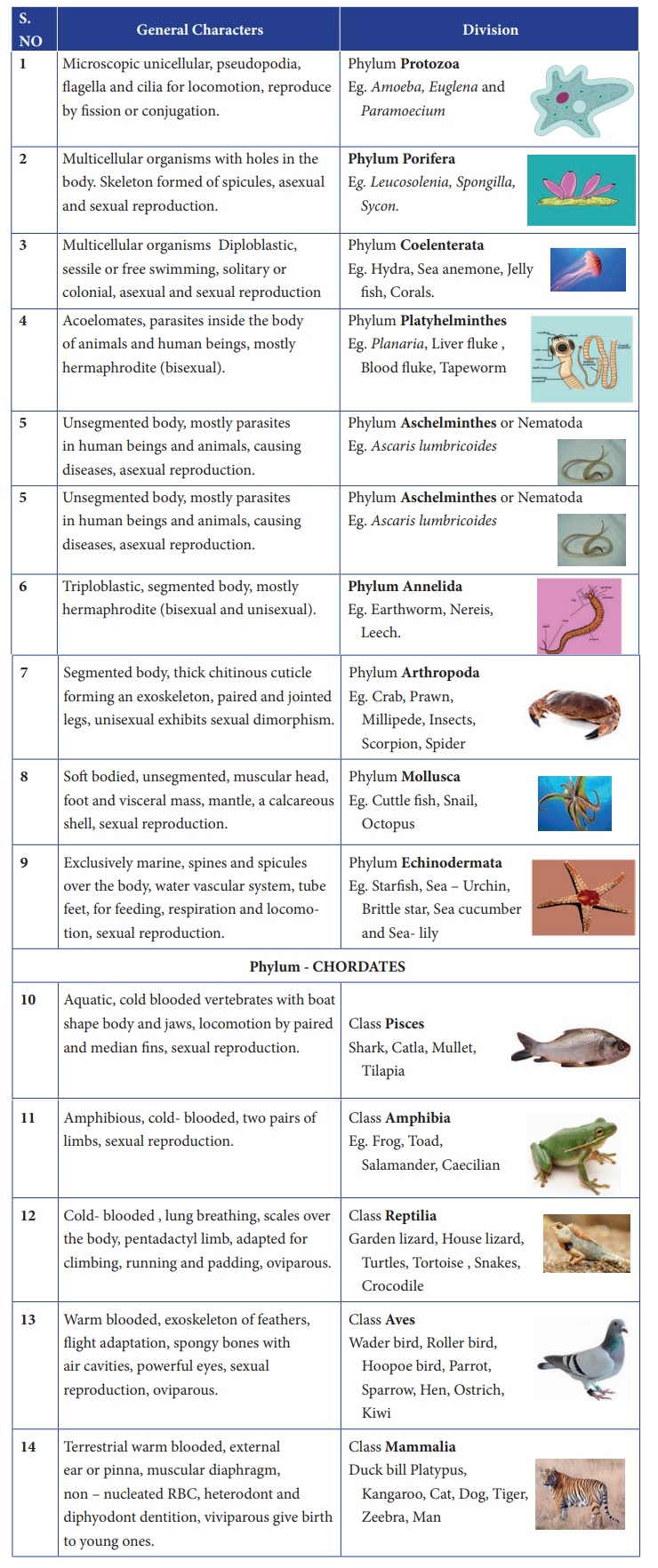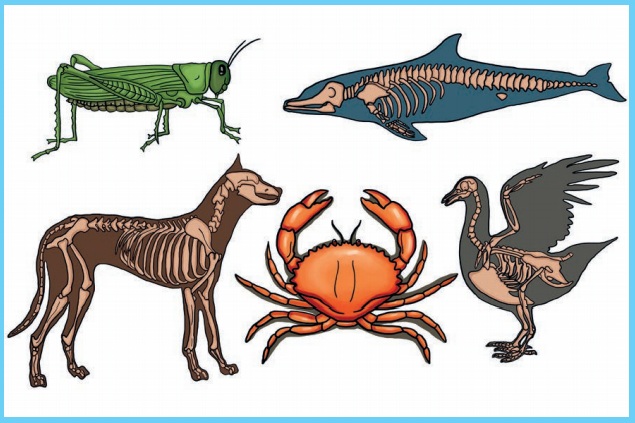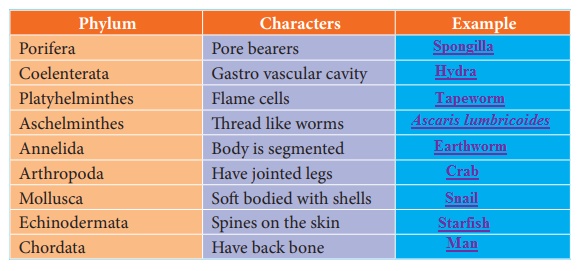Term 2 Unit 5 | 7th Science - Classification of Animal | 7th Science : Term 2 Unit 5 : Basis of Classification
Chapter: 7th Science : Term 2 Unit 5 : Basis of Classification
Classification of Animal
Basics of
Classification:
Living organisms are so large in number that they
need to be classified into smaller groups. Classification of living organisms
is made on the basis of their characteristics, similarities and differences
Identify animals with backbone and without
backbone based on the figure.

Aristotle was a Greek philosopher
and thinker who lived about 2400 years ago. Aristotle came up with the
following grouping system that was used for almost 2000 years after his death!
* He classified all organisms into
either animals or plants.
* Then he classified into those
'with blood' and those 'without blood'.
* Then the animals are classified
into three groups based on their method of movement: walkers, flyers or
swimmers.

ACTIVITY 1
Aim : To sort out a box of given buttons and classify them into
different types. Materials Required : A box full of different types of
buttons.
Procedure:
1. Take a box of given buttons.
2. Work in small groups of
three or four and classify the buttons based on the following classification
criteria.
i. Shape
ii. Buttons with four holes
iii. Buttons with two holes.
iv. Colour
3. Identify other features that can
be used to sort out buttons into different groups.

Based on the, special features and characters, the
students identify each button, according to its size, hole and colour. This is
known as identification. Then teacher shall ask students to separate the
buttons according to the size, hole and colours. This is known as assortment.
After assorting the buttons the teacher ask the
students to gather the buttons according to their, size, hole and colours. This
is termed as grouping. Identification, assortment and grouping, which results
in classification
Classification:
The method of arranging the organisms into groups
is called classification. When we classify things we put them into groups based
on their characteristics.
Why do we
classify things?
1. Classifying things makes it easy for us to
know their similarities and differences.
2. Things with similar characters are
classified into same group. These things are usually similar in at least one
characteristic.
3. Things with different characteristics are
classified into different groups. These things are usually different in at
least one characteristic.
4. Classification helps us to understand,
living and non – living things in better way. For example, we can classify a
newly discovered organism, we would come to know, how it relates with other.
Need for
Classification
* Classification is needed to identify an organism
correctly.
* It helps to know the origin and evolution of an
organism.
* To establish
the relationship among different organisms.
* It provides the information about living things
in different geographical regions.
It helps in understanding how complex organisms
must have evolved from simpler ones.
Scientists have been able to discover and classify
more than 2 million organisms on the earth ranging from tiny bacteria to the
largest blue whales. Each organism has been classified in a category based on its
evolutionary relationship with other group of organisms. We can define
hierarchy of organisms as:
“The system of arranging taxonomic categories in a descending order based on their relationships with other group of organism is called hierarchy of categories”. This system was introduced by Linnaeus and is called Linnaean hierarchy. There are seven main categories of hierarchies namely, Kingdom, Phylum, Class, Order, Family, Genus and Species. Species is the basic unit of classification.
Based on the above classification the following
table shows different phylum, with general features and examples of different
phyla and classes

ACTIVITY 2
Fill up the blanks with the suitable
organisms

1. Vertebrates man, dog and
2. Invertebrates earthworm, crab and
3. Name the vertebrates with wings
4. Name the invertebrates with wings
5. Name the invertebrates with
segmented legs
6. Name the invertebrates with
Jointed legs
7. Name the warm blooded vertebrates
8. Name the cold blooded vertebrates
9. Name the vertebrates with lungs
respiration
10. Name the animal with beak

ACTIVITY 3
Given table shows the name of the
phylum and its characteristic features. Write name of the animals belonging to
the respective phylum.
Phylum : Characters
: Example
Porifera : Pore bearers : Spongilla
Coelenterata : Gastro vascular cavity : Hydra
Platyhelminthes : Flame cells : Tapeworm
Aschelminthes : Thread like worms : Ascaris lumbricoides
Annelida : Body is segmented : Earthworm
Arthropoda : Have
jointed legs : Crab
Mollusca : Soft bodied with shells : Snail
Echinodermata : Spines on the skin : Starfish
Chordata : Have backbone : Man

Related Topics